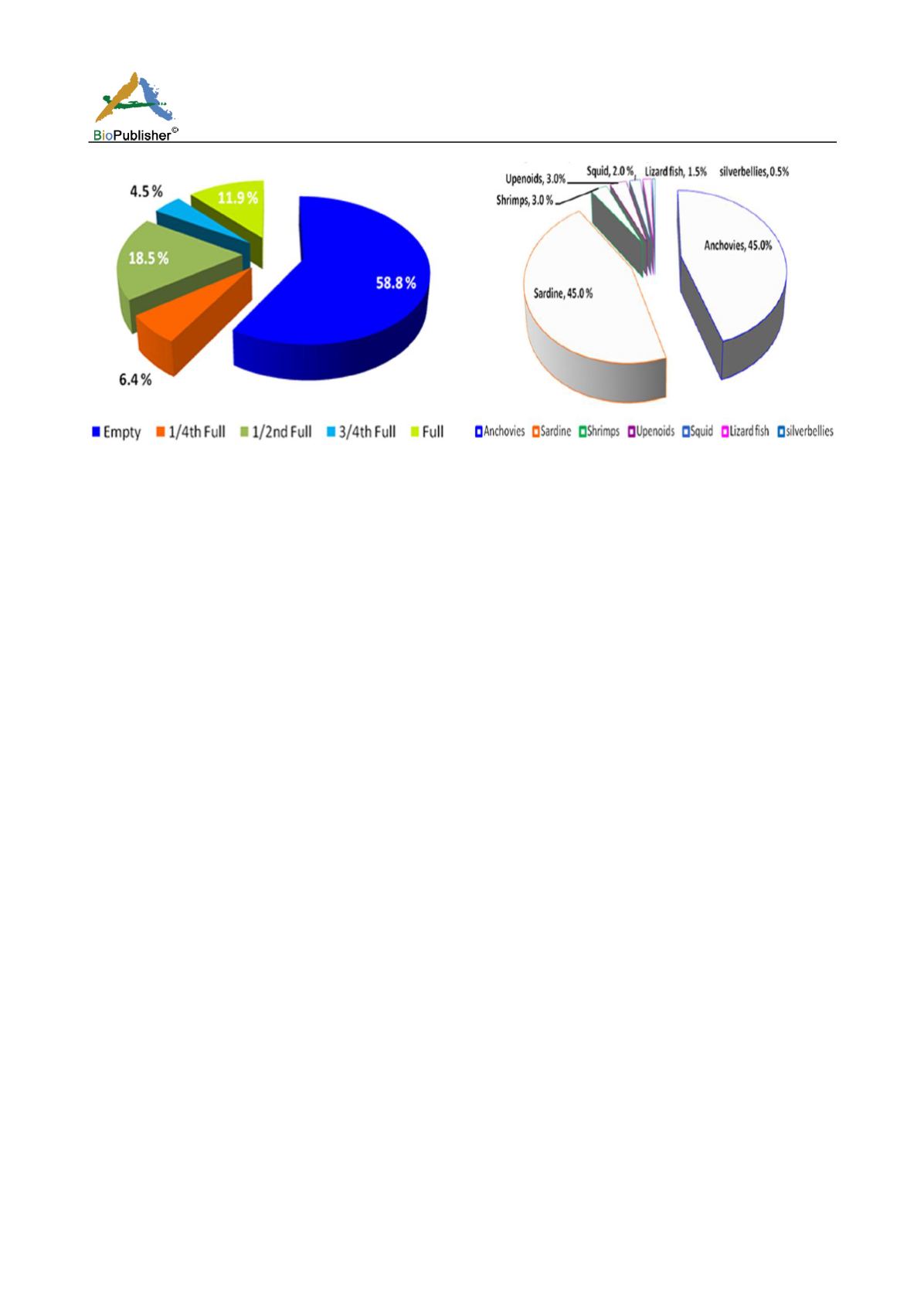
International Journal of Marine Science 2016, Vol.6, No.44, 1-8
6
Fig.8. Feeding intensity of
S.guttatus
in the east coast of India Fig.9. Dietary composition of
S.guttatus
in the east coast of India
Discussion
The trawls are the major gears and they land the juvenile seerfish and contribute 10.1% to the total catch and rest
of the catch was landed by the indigenous gears (Prathibha Rohit & Shubhadeep Ghosh, 2012). The seerfishes
contribute about 2.3% of the total marine fish landings in India (Pandian, 2005). The catch of the seerfish in
northeast coast of India has increased to considerable level during recent past. The monthly production trends
indicated that peak catches were during March – April at Visakhapatnam (Muthiah, 2002). The exploratory survey
data indicates that there is a marginal increase in catch of spotted seerfish during the period from 2006 to 2010.
Naik et al., 1998 reported the total length range of the species in the west coast as 25-72 cm. Muthiah et al
.
, 2002
recorded the length of spotted seerfish in the range of 16 - 62 cm in the west coast of India. Ghosh et al., 2009
recorded the range was between 20 to 58 cm from the west coast. The size range of spotted seerfish was between
20.1 and 66.0 cm in the upper east coast of India as reported by Pandian et al., 2005. They were also of the
opinion that the size group of the species which supported the commercial fishery was in the length range of 32 –
42 cm and the size at first maturity was 34 cm. The fork length of
S.guttatus
landed by gillnets ranged between 20
cm and 60 cm all over India as per the studies conducted by Prathibha Rohit & Shubhadeep Ghosh, 2012. In the
present study the size range was from 16.1 to 63.5 cm fork length (FL) which is more or less the same sizes as
recorded in the east coast as well as west coast.
Naik et al., 1998 reported the male to female ratio of the species as 1:1.2 in the west coast of India. In the present
study also similar result was obtained with dominance of female in the population. The dominance of female was
observed as the fish grows and it was more in the higher length groups. Very less study has been done on the
morphometric relationship of seer fish in Indian waters. The relationship between the total length and fork length
was attempted in the present paper and it yielded a linear relationship with higher degree of correlation between
both the parameters. Naik et al. (1998) studied the L-W relationship of
S guttatus
in the mid-west coast of India
and reported the ‘b’ value as 2.7506 and 2.9071 for male and female respectively and the pooled value as 2.8226.
Pandian et al. (2005) reported the ‘b’ value in the L-W relationship as 2.7499 in the upper east coast of India.
Pratibha Rohit and Subhadeep Ghosh (2012) studied the relationship for both the west coast and east coast of
India and obtained the ‘b’ value as 2.8884 suggesting an allometric growth. All these studies indicated that the ‘b’
value is less than 3. From this it can be said that the rate of increase of weight is less in comparison to the length
increase for the
S. guttatus
spp. and it is lesser than 3. In the present study the ‘b’ value obtained is 2.2633 for
male and 2.4644 for female which is in agreement with the previous studies and suggests a negative allometric
growth of the species in the north east coast of India. Also the lesser ‘b’ value (2.2683) of male specimens than the
female specimens (2.4644) indicates that the rate of increase of weight in relation to length is less for male than
the females and for a particular length group the corresponding females will be heavier than the males.


